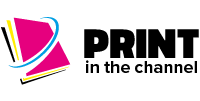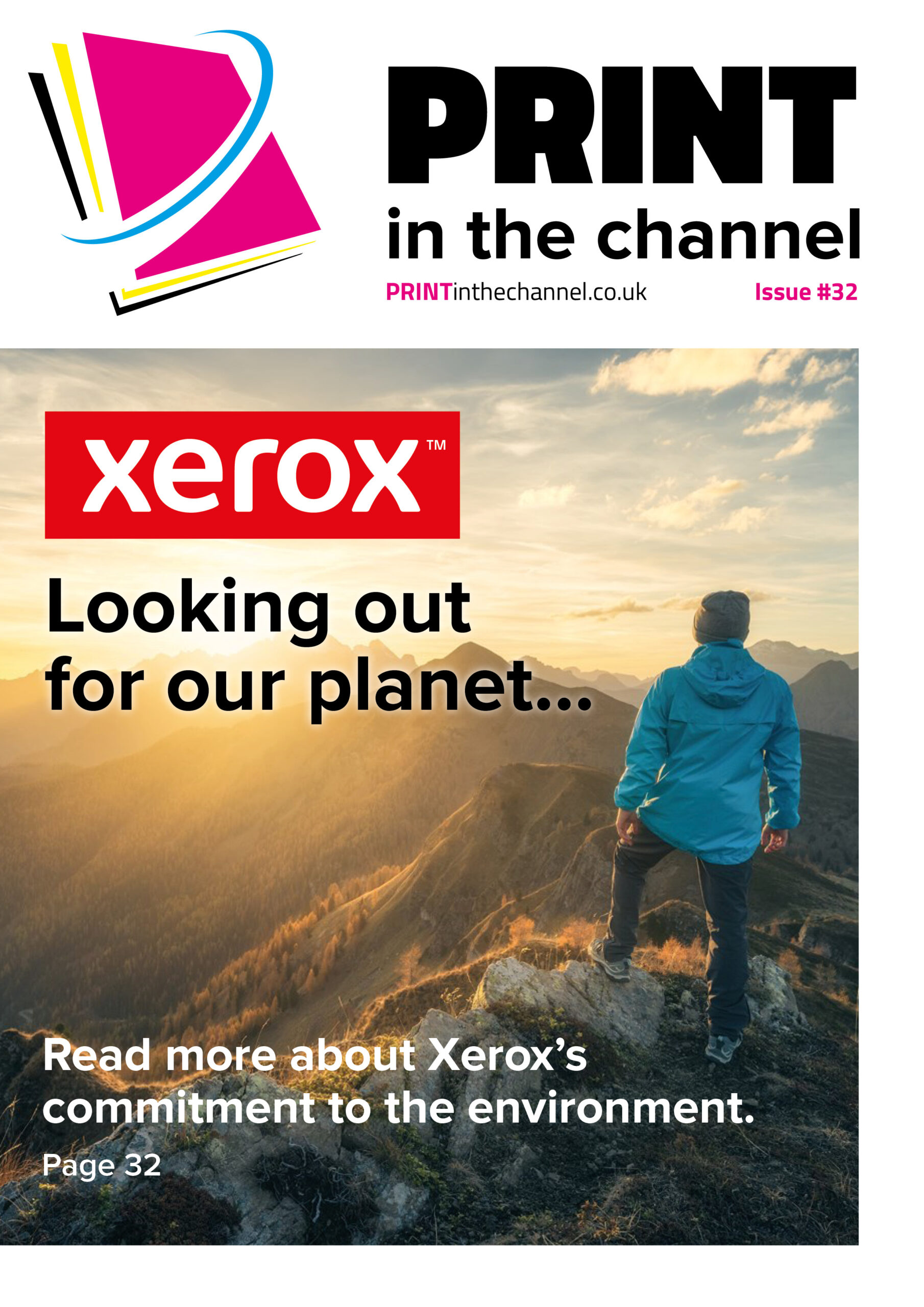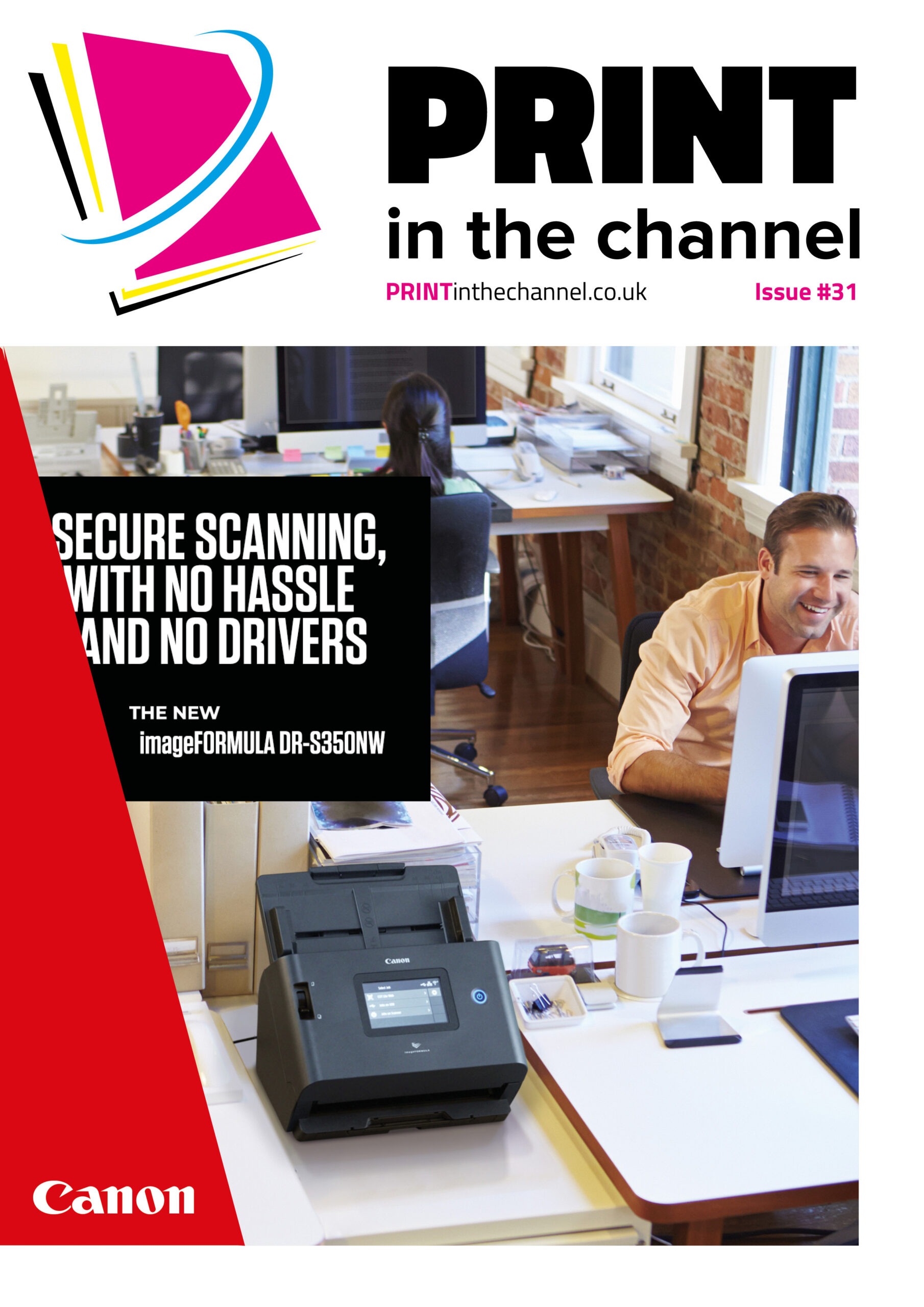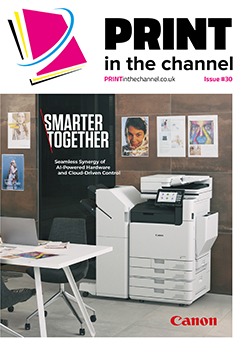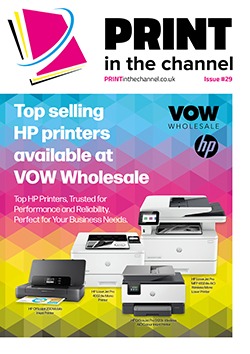Kyocera has had a busy year with the refresh of some of its ranges, and the company is looking positively to the future as it seeks to keep on top of industry trends and reap the benefits of an uptick in certain markets.
The past few years post-COVID have been tough for the print sector, meaning that manufacturers and resellers have had to work hard and innovate to stay relevant but those that do can still thrive – and Kyocera is one such company.
Steve Doust, group sales director at Kyocera, notes that it remains a challenging market. “The world’s different to a few years ago in terms of the type of buyers out there and the way they buy is different to what historically our industry has been used to,” he says. “Keeping ourselves relevant and ensuring the sales guys keep themselves relevant as thought leaders and being the right adviser for customers has been key to us over this year.”
He adds that Kyocera is halfway through its financial year and has fared well so far, and there is a good pipeline of opportunities for the remainder of the year.
“We’re seeing growth around the A3 colour marketplace, which is the first time since COVID that we’re starting to see that market growing again,” he adds.
Steve Pearce, Kyocera’s group head of marketing, adds that in the office, people tend to want a multifunctional printer that can cope with a variety of jobs, rather than just an A4, which might handle everyday printing but not other jobs such as scanning and photocopying. “People don’t really want to buy a printer, but if they are going to, they want it to do everything, so they don’t have multiple devices in the office,” he says.
He adds that while growth in the A3 market could be back to pre-COVID levels by the end of next year – and Kyocera is enjoying that growth too – on the flipside, sales of A4 units are decreasing. “Sales of those peaked during COVID and have now fallen back. But we’re seeing a quarterly growth in the number of pages being printed over the last four years as well, so we are on a recovery path as an industry.”
There are a few reasons behind the changes in the market. Steve Doust notes that more people are going back to the office, and when they do, they tend to print more documents than when they are at home. “There’s a lot of specialised print around too, which is driving different kinds of volumes,” he adds.
Steve Doust adds that the changing nature of buying means that it has changed the role of salespeople too. “Our salespeople are going back to consultative selling again, proactively looking at their customer base in the field and asking questions again: ‘why are you trying to do what you’re trying to do?’ ‘What are you trying to get from that?’ ‘What are your risks, et cetera?’ That’s only a positive for the sales guys.”
TASKalfa refresh
One of the successes this year for Kyocera was the refresh of the TASKalfa portfolio of multifunctional printers. Steve Pearce says that as with any successor machine, they get faster and offer more functions than previously, but these have also focused on sustainability. “A lot of the messaging from our industry over the last five years has been customer demands on sustainability, and we have responded to this,” he says. “For instance, the percentage of the plastics that are recyclable in the machine is higher, it comes in award-winning pulped packaging without any polystyrene, our machines are fully offset carbon neutral, plus we offset five years’ worth of consumables.”
But he adds there is an acknowledgment that using a TASKalfa device does take energy, toner and such like. “There’s no greenwashing here,” he adds. “We’ve put a smart meter on the screen, so that when you’re printing, you can see what energy you’ve used, the amount of pages printed and what they equate to in carbon tonnage. If our customers want to buy greener, we’re giving them the tools to help them to measure themselves and make a difference. That’s the biggest leap forward.”
He adds that there is increasing legislation that puts the onus on businesses – especially larger ones – to disclose their sustainability goals and progress towards them. “But customers are also factoring it into their buying decisions, especially younger people that are increasingly making up the market – it is part of
the mindset. Having that data available will allow people to make wiser purchasing decisions and we’re at the forefront of that.”
This is important as many businesses now are looking to reduce the amount of energy they use or CO2 they produce and be able to demonstrate this to stakeholders. “Data is everything here, and we are making that readily available to customers,” adds Steve Doust.
Steve Pearce says that this focus is a win-win for vendors. “We’re seeing tenders coming through from the public sector who are really pushing this agenda, even amounting to up to 15% of the award value, and we’re a leader in the public sector for this reason – among others.”
ECOSYS update
Likewise, Kyocera has refreshed the ECOSYS range of A4 printers this year, which have been built to the same philosophy as the TASKalfa range. “These machines are built to be hardwearing and durable and have parts that last,” says Steve Pearce. “Having a product that doesn’t need components replaced often means the running costs are lower, which customers want as cost is still king.”
Steve Doust adds that while the A4 market isn’t as strong as the A3 there is nevertheless still consistent demand as many businesses require mixed printer fleets. “Our A4 and A3 options fit well together as they are built to the same philosophy,” he adds.
Cyber concerns
One increasing concern for print buyers is cybersecurity. “Customers are focused on so many more areas outside the world of print, and you have to keep customers comfortable in those worlds, whether that’s data security, cyber, how they’re managing content within their business, and how you can secure that,” says Steve Doust.
AI is part of the equation, as Kyocera is automating aspects to help users to proactively spot what’s happening and to make judgments on that, adds Steve Pearce. “For instance, if someone is away from their usual workplaces and tries to print a document if you’re using a normal cloud print platform it holds it and waits for you to release it. With our managed service operation centre here, our AI bot would flag this print notice and that it was to a different IP address and it sends a message to the user asking them if it is a legitimate job – only when it is confirmed is the job released.
“It’s little, but it makes things easier and smoother. It’s understanding what makes a difference to a customer. AI is a massive thing, but what does it mean to the customer? How does it make that customer’s business more efficient and quicker?”
MPS
This is also an indication of how managed print services (MPS) is evolving. “MPS is growing again as customers are relooking at what hybrid working really looks like, how many people are coming back to the office, and what their future needs are” says Steve Doust.
“It’s a difficult discussion with customers because they almost don’t know what they need tomorrow because they’re moving away from home-based or hybrid working models back to getting people back into an office, but then they don’t know who’s going to be printing and who isn’t. That’s why a lot of our conversations start with their data and how they’re managing that and how they want to scan or get information into the applications they’ve got.”
Steve Pearce adds that MPS is evolving to more of a managed print as a service model. “Customers don’t want to buy printers up front or buy them outright, they don’t want to buy from separate vendors, they want it as a service,” he says.
Future
The movement of MPS to more of a service model, along with an increasing convergence of MPS and managed service providers will be a key trend in 2026, according to Steve Pearce. “Providers such as Kyocera are acting more like managed service providers, which is already in our DNA as an IT organisation, as opposed to the old MPS provider getting boxes out of the room,” he says. “The IT and print worlds are getting closer together and learning off each other.”
Steve Doust adds that the trends of this year are likely to accelerate, with cybersecurity a particular concern.
“Every machine that goes out there is a node sitting on the network. There’s a risk around it,” he says. “That just accelerates the cyber conversations we’re already having. Customers haven’t got the IT expertise in-house, so they want to lean on an MSP like us that has a SOC within its building in the UK that can proactively manage any problems and they know the equipment they buy is secure, on their network as is their data.
“Also, green issues will accelerate even more, especially as more governance will be mandating it.”
Whatever 2026 holds, Kyocera is ready for it, and the team will be looking to bring more solutions to customers.
This article first appeared in Print in the Channel magazine issue #31.
